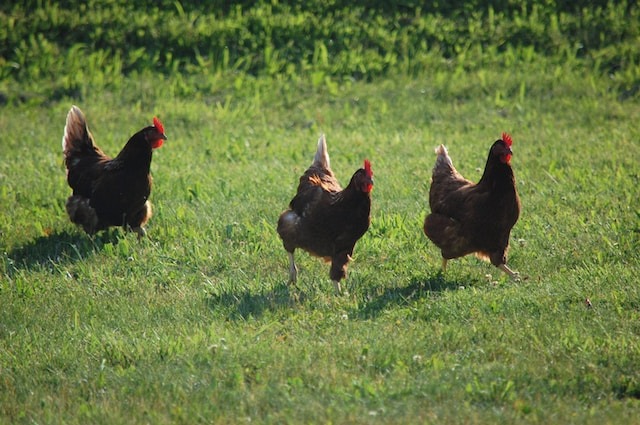W46 Chicken Update: Plan to Curb Global Avian Flu Spread and Chicken Price Surge in Brazil Amid Heightened Demand and Production Challenges

A Three-Point Action Plan to Curb Global Avian Flu Spread
The Compassion in World Farming (CIWF) emphasizes the need for extensive vaccination in poultry and a significant transformation in livestock farming practices to address the avian flu threat. The CIWF urges collaboration between the European, the United Kingdom (UK), and the United States (US) governments, along with the World Organization for Animal Health (WOAH) and the Food and Agriculture Organization (FAO,) to implement their proposed action plan. Based on current scientific insights, the three-point plan advocates for mass vaccination of birds in livestock farming to curb virus transmission, reducing the size of poultry farms to allow more space for animals and deploying robust chicken breeds.
Since pigs are also sensitive to flu viruses, there is a need to restructure the swine farming sector to grant hogs more space and a healthier environment while significantly reducing the numbers. The CIWF notes that bird flu has led to the death or culling of approximately 500 million livestock animals globally as of 2021, excluding wild birds. Notably, the virus has expanded its reach to various mammals such as otters, foxes, dolphins, minks, dogs, and cats. The CIWF underscores the potential for a dangerous pandemic if the virus evolves into human transmission, a concern reiterated by the FAO, the WOAH, and the World Health Organization (WHO) in a recent joint publication.
Chicken Prices in Brazil Surge Amid Production Challenges, Heightened Domestic and Global Demand
The Poultry and Swine Intelligence Center (CIAS) reports that the downward production cost trend for broiler chickens in Brazil ceased in Oct-23. The ICPFrango index increased by 1.03% month-on-month (MoM) to 330.18 points during Oct-23, breaking a streak of seven consecutive months of decline since Mar-23. This rise in Oct-23 was primarily driven by a 1.83% variation in animal feed costs, given its substantial weight of 67.35% in the total production cost calculation. In Paraná, the production cost for 1 kilogram (kg) of live broiler chicken in a controlled environment rose to USD 0.88 in Oct-23, a marginal increase of USD 0.01 compared to Sep-23. Despite this, the ICPFrango has seen a cumulative decline of 22.95% year-on-year (YoY) so far in 2023 and a variation of -22.29% over the last 12 months. Notably, the adjustment in technical coefficients in Jan-23 contributed to a 7.1% reduction, while prices accounted for the rest of the accumulated variation in both the year and the last 12 months.
The Brazilian meat market is experiencing notable shifts, with the rising chicken meat prices posing challenges to its competitiveness compared to pork and beef. Whole chilled chicken is priced at USD 0.53/kg below special pork carcasses so far in Nov-23, signaling a 5.7% reduction in the price gap compared to Oct-23. The surge in chicken prices impacts its market competitiveness directly, creating a dilemma for producers grappling with production costs while striving to maintain attractive consumer prices. The Center for Advanced Studies in Applied Economics (Cepea) underscores the role of robust domestic demand and thriving poultry product exports in sustaining domestic chicken meat value. This intricate scenario shows how internal and external factors directly influence prices and sector competitiveness. The diminishing price difference between chicken and pork may impact consumer choices and shape producers' marketing strategies. This situation highlights the need for a subtle understanding of market dynamics and effective strategies to ensure competitiveness in the sector.
US Chicken Export Volume Fall in Sep-23 But Rise in the First Three Quarters of 2023
The United States Department of Agriculture (USDA) reports that United States (US) chicken meat exports totaled 253.48 thousand metric tons (mt) in Sep-23, a 10.02% MoM drop and a 6.55% YoY fall. Nevertheless, US chicken meat shipments amounted to 2.46 million metric tons (mmt) in the first three quarters of 2023, an increase of 1.25% compared to the same period in 2022. In the last 12 months, the US chicken meat export volume reached over 3.33 mmt, 1.27% higher than that recorded in the previous period. In its Nov-23 report, the USDA expects US chicken meat exports to amount to around 3.26 mmt in 2023, with an estimated monthly shipment of around 265 thousand mt in Q4-23.






